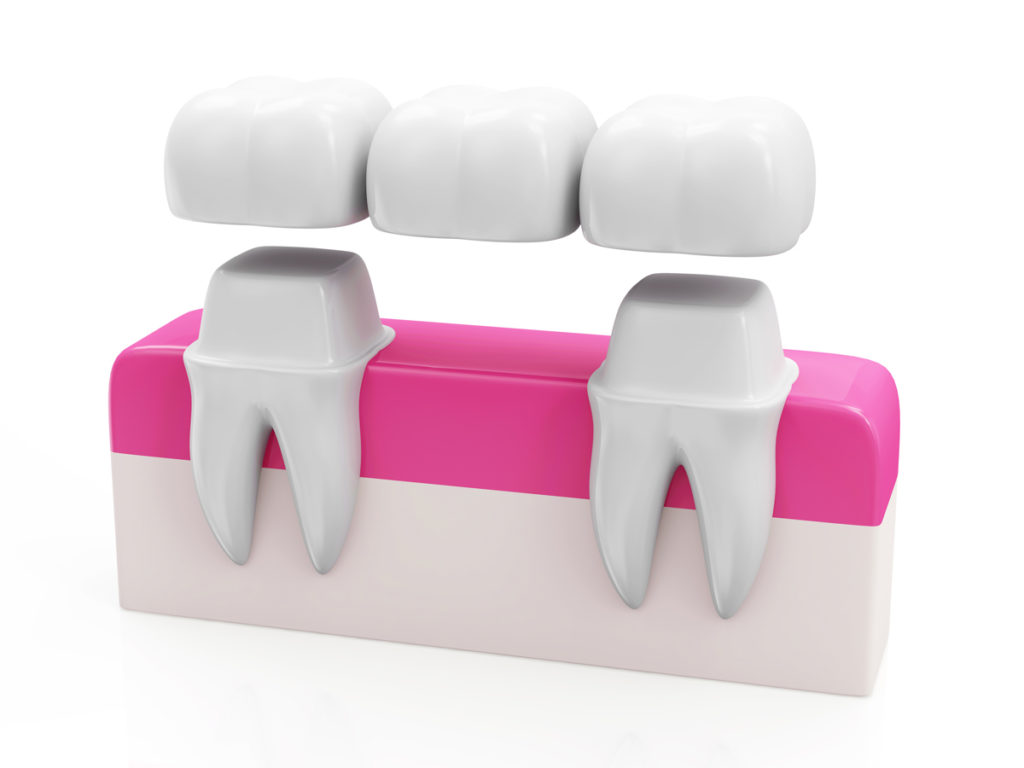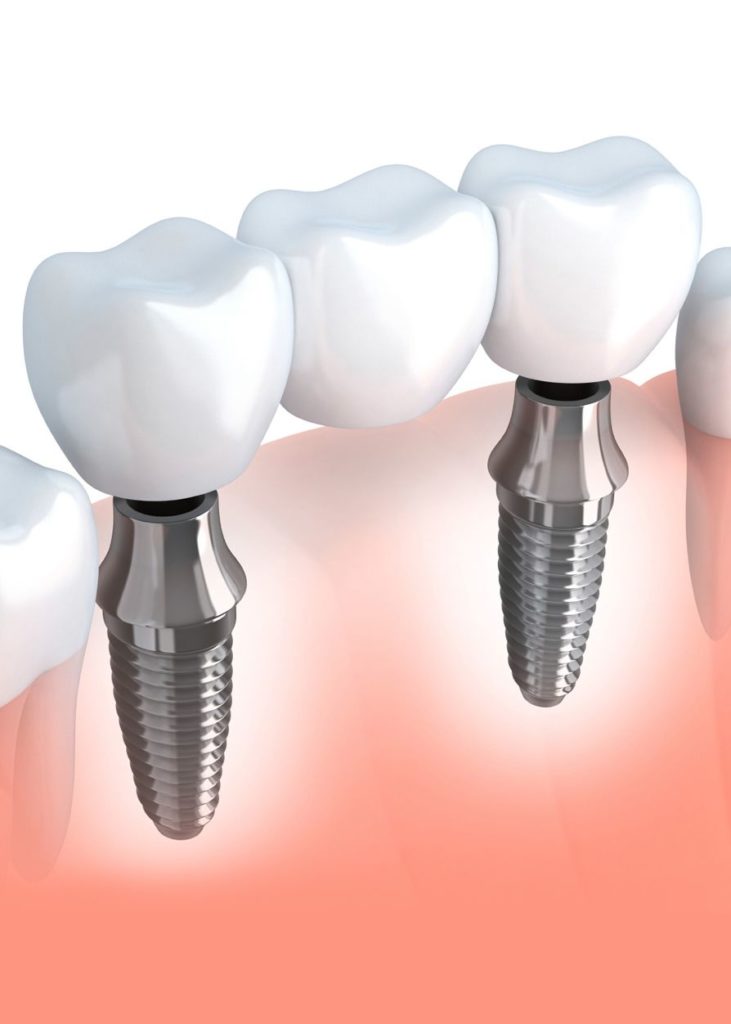
Dental bridges are supposed to replace missing teeth on the gum level. Basically, bridges are made up of dental crowns. Therefore they are indirect replacements, which mean that they are not made directly in the mouth but at the dental technicians’ laboratory. Whilst crowns are prepared for replacing one tooth only, bridges provide complex solution for replacing missing teeth.
What are the disadvantages of having missing teeth, without dental bridges?
In case of extensive adontia (if there are more missing teeth), it is suggested to have a bridge done as this situation can easily lead to:
- Chewing on one side only which loads the jaw joints too much
- Inefficient chewing which causes problems to the digestive system
- Sensitive gums and possible inflammation at the area where there are missing teeth
- Bone resorption can grow at the a deficient area
- Disordered dentition as because of missing teeth the neighbouring ones can change axis and move
Prevent the development of dental problems by having a dental bridge made.

TYPES OF DENTAL BRIDGES
We distinguish between bridges built on neighbouring teeth and implant bridges.
Bridges built on own teeth
In this case our experts fix the problem of missing teeth by preparing existing neighbouring teeth and make dental bridges on them. However, in order to enable making bridges on existing teeth, they need to be perfectly healthy and stable. Our dentists and oral surgeons of course do their best in this situation to prepare these teeth so as the bridges fit perfectly. If this option is not possible, then they will suggest a different solution to solve your dental problem.

- quick solution, can be finished within 1-2 weeks
- resembles natural teeth deceptively
- provides a perfect aesthetic effect
- the surface of the teeth which hold the bridge has to be prepared (this does not endanger their health)
- it is worth chewing carefully and paying attention during the consumption of certain food at the area where you have a bridge
The process of making a dental bridge
Firstly, the initial personal consultation and assessment takes place where the dentist and the patient are present.
After this, the dentist files down the surface of the teeth next to the deficient area, and prepares them to fit the bridge.
This is followed by an impression which is sent to the dental technicians laboratory.
While the final bridge is being made, the patient can ask for a temporary bridge. This is an impermanent replacement which is used in case of more complex and longer treatments. It is useful to ease the uncomfortability of temporary toothlessness and to avoid having a removable denture. Furthermore, it is important to defend filed teeth from external effects. If the temporary bridge is used for a short period of time, it is made of plastic. If the temporary restoration is needed for long time, the technicians apply a plastic covering on a metal frame base.
Before fixing the bridge, we daub the neighbouring teeth with a special material which does not cause any irritation but promotes agglutination between the teeth and the bridge.
The trial of the final dental bridge takes place as soon as it is finished by the technical laboratory. The trial is carried out in several steps. First, there is the trial of the metal frame if it is necessary (e.g. in case of bridges on the whole jaw), then it is followed by the matt trial, and last the final cementing of the bridge. During this our experts examine if the articulation, comfortability and optical effect of the bridge is fine.
Bridges built on own teeth are usually prepared within 1-2 weeks. Afterwards, it is important that the patient takes good care of his/her oral hygiene, and pays attention to attending regular dental check-ups.
Bridges built on dental implants
Thanks to modern dental technology dentists can easily make dental bridges on implants. Implantcenter is a front-runner on the field of implantation so you can be sure that we make dental implant bridges with great expertise, as well.
Main characteristics of implant bridges
- There is no need to file down neighbouring teeth
- It is more stable than a regular bridge, it can provide a solution without any problems for even decades
- The bone at the toothless area is loaded evenly so bone resorption can be avoided
- Thanks to the inserted implants it is safer to chew hard food

The most important advantage of implant bridges is that if there are more missing teeth, they can be replaced stably by using the optimal number of implants. This method can provide a solution in case of total adontia, as well, by preparing a bridge anchored on implants on the whole jaw.
Implantation is contraindicated in the cases listed below:
- Bleeding disorders and heart problems
- Diabetes
- Taking certain medicine (e.g. treating or preventing osteoporosis, the so-called bisphosphonates)
- Smoking
- Bad oral hygiene
The above circumstances can enable to make dental bridges built on own teeth instead of implant bridges to replace missing teeth.
THE MATERIAL OF DENTAL BRIDGES
Dental bridges can be prepared using the same materials as in case of dental crowns. Our experts usually use two types of bridges at Implantcenter Dentistry and Oral Surgery:
- porcelain fused to metal
- zirconia metal-free ceramic
Find more information about the advantages and disadvantages of certain materials here:
WOULD YOU NEED A DENTAL BRIDGE OR WANT TO KNOW MORE ABOUT BRIDGES?
Get in touch with us!
